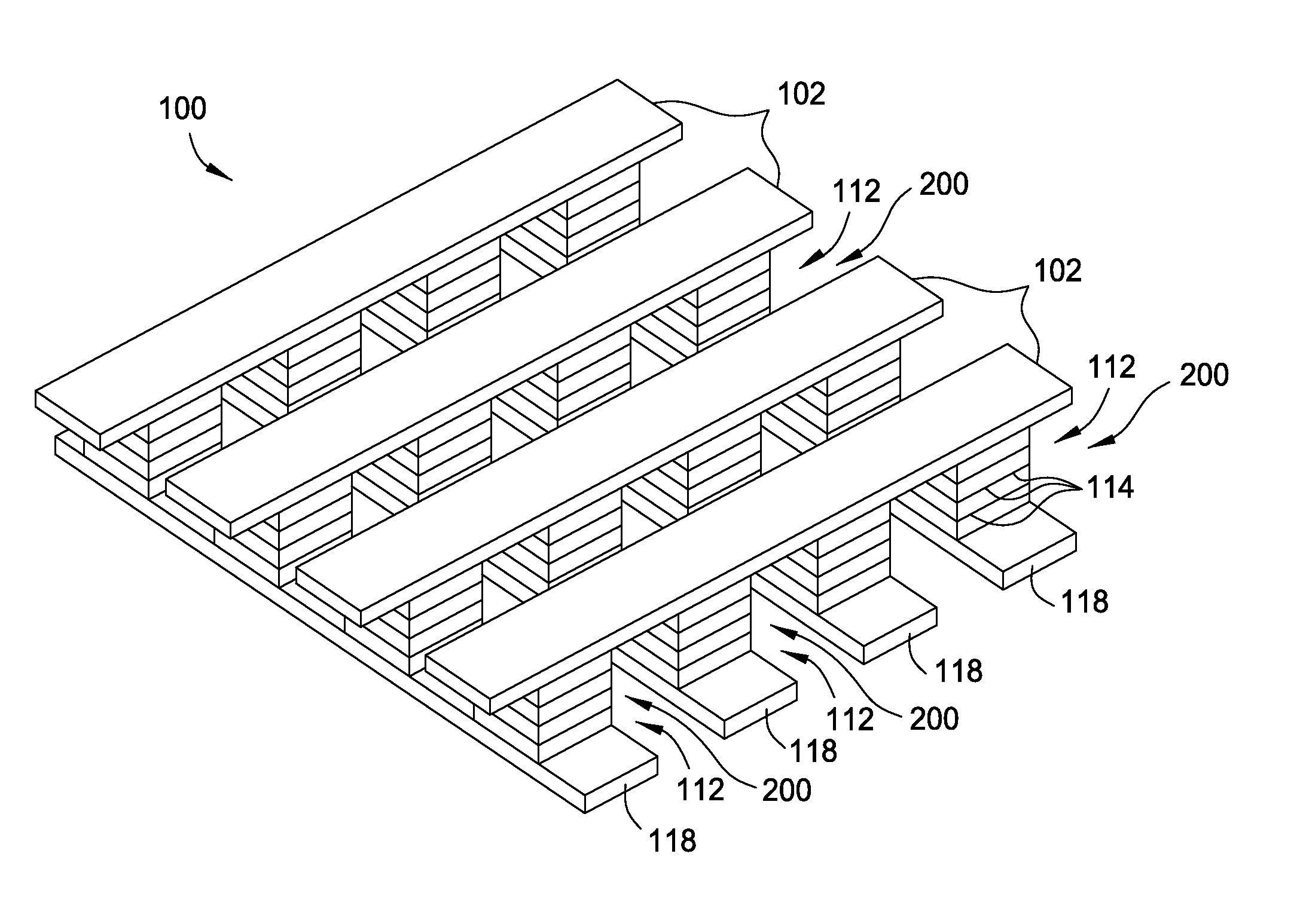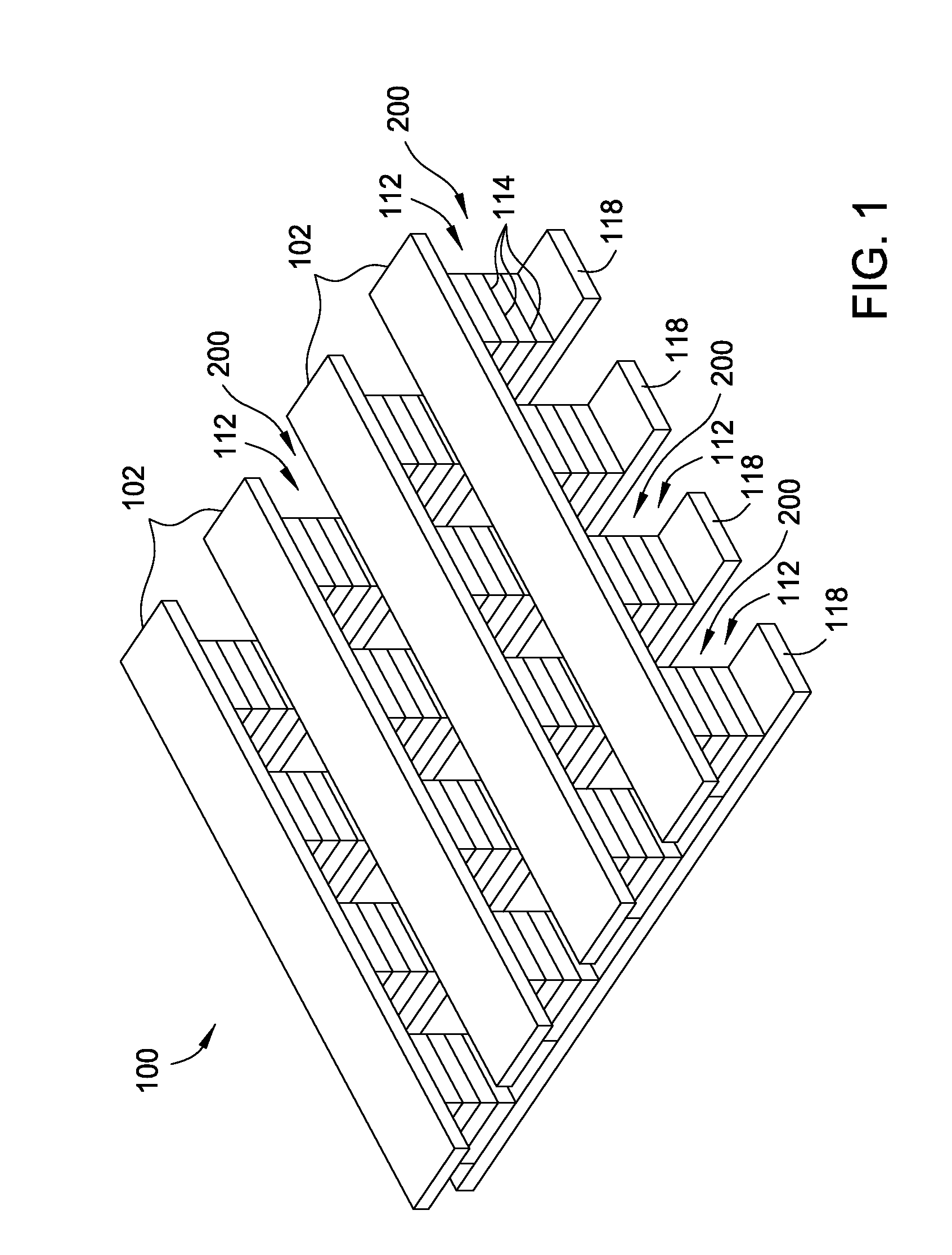Defect gradient to boost nonvolatile memory performance
a nonvolatile memory and gradient technology, applied in the direction of bulk negative resistance effect devices, semiconductor devices, electrical equipment, etc., can solve the problems of insufficient resistance of high-to-low resistance films and/or the ratio of high-to-low resistance states to be of use within a practical nonvolatile memory device, and the magnitude of the difference between states and differences between states throughout the life of the device is often not desirabl
- Summary
- Abstract
- Description
- Claims
- Application Information
AI Technical Summary
Benefits of technology
Problems solved by technology
Method used
Image
Examples
Embodiment Construction
[0034]Embodiments of the present invention generally relate to a resistive switching nonvolatile memory element that is formed in a resistive switching memory device that may be used in a memory array to store digital data. The memory element is generally constructed as a metal-insulator-metal stack. The resistive switching portion of the memory element includes a getter portion and / or a defect portion. In general, the getter portion is an area of the memory element that is used to help form, during the resistive switching memory device's fabrication process, a region of the resistive switching layer that has a greater number of vacancies or defects as compared to the remainder of resistive switching layer. The defect portion is a formed region or area of the memory element that has a greater number of vacancies or defects as compared to the remainder of the resistive switching layer. The addition of the getter or defect portions in a formed memory device generally improves the reli...
PUM
 Login to View More
Login to View More Abstract
Description
Claims
Application Information
 Login to View More
Login to View More - R&D
- Intellectual Property
- Life Sciences
- Materials
- Tech Scout
- Unparalleled Data Quality
- Higher Quality Content
- 60% Fewer Hallucinations
Browse by: Latest US Patents, China's latest patents, Technical Efficacy Thesaurus, Application Domain, Technology Topic, Popular Technical Reports.
© 2025 PatSnap. All rights reserved.Legal|Privacy policy|Modern Slavery Act Transparency Statement|Sitemap|About US| Contact US: help@patsnap.com



